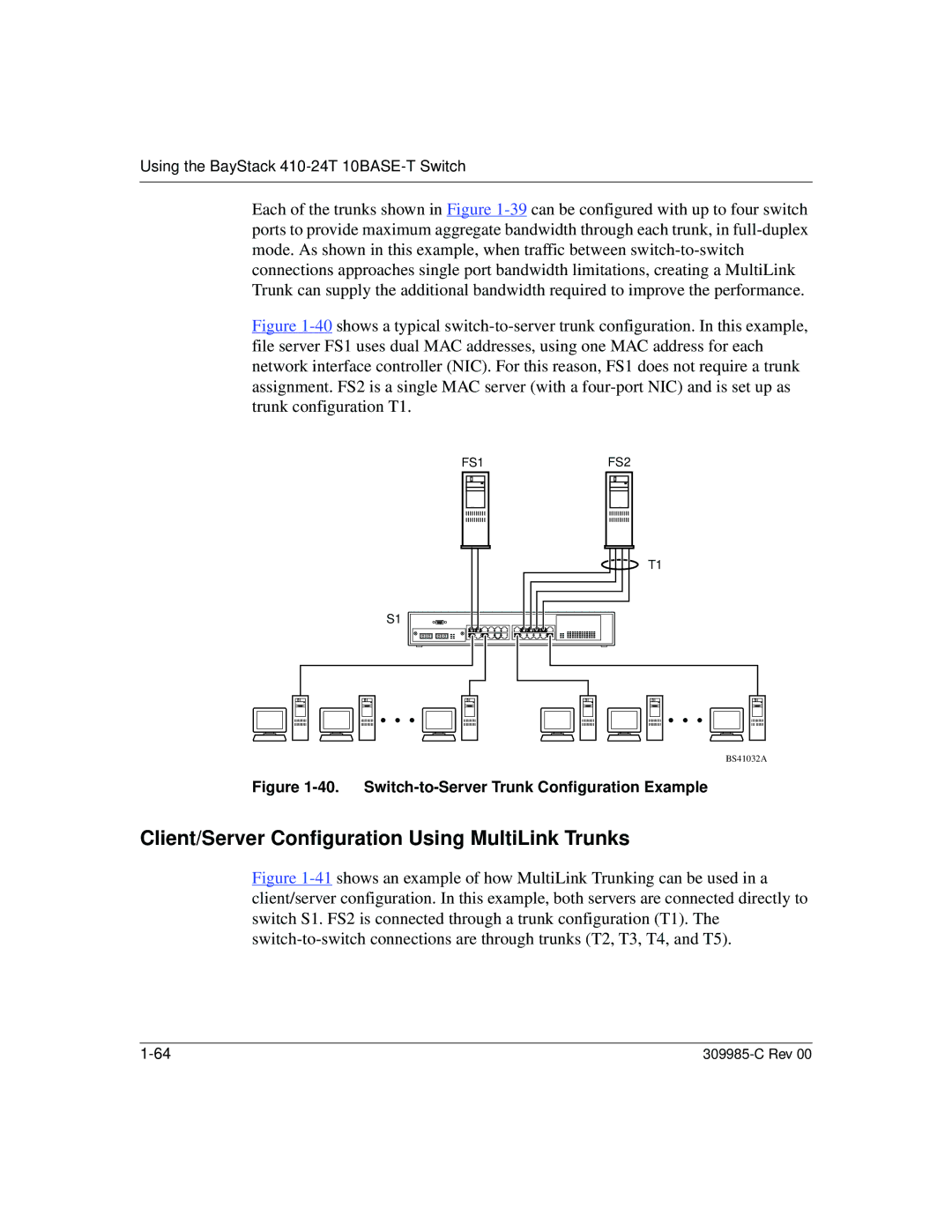
Using the BayStack 410-24T 10BASE-T Switch
Each of the trunks shown in Figure
Figure 1-40 shows a typical switch-to-server trunk configuration. In this example, file server FS1 uses dual MAC addresses, using one MAC address for each network interface controller (NIC). For this reason, FS1 does not require a trunk assignment. FS2 is a single MAC server (with a four-port NIC) and is set up as trunk configuration T1.
FS1 | FS2 |
T1
S1 |
BS41032A
